5 Best Phones for Astrophotography in 2022 – Expert Guide

Are you wondering which are the best phones for astrophotography? If yes then you are on the right page. In this article, we are going to cover what astrophotography is, what camera specifications are important to take a good photo of the night sky, and which are some of the best phones for astrophotography currently available on the market.
Astrophotography is a photography of astronomical objects and areas of the night sky. Today, astrophotography is for the most part a subdiscipline in amateur astronomy. Instead of gathering scientific data, the goal is more to take an aesthetically pleasing photo.
To be honest, a good camera would be more suitable for astrophotography as they have much larger sensors, better lenses, mechanisms, and algorithms for capturing awesome photos. But advancements in phone cameras in the past few years have enabled us to take great astrophotography images also with a phone. But of course, not just any phone will do the trick so we decided to create this guide.
If you want to read a full detailed review of our recommended phone for astrophotography click here. Or if you are more interested in our top budget pick we got you covered here.
DID YOU KNOW: Astrophotography or astronomical imaging was pioneered back in the mid 19-th century. Back then amateur astronomers had to overcome many technical challenges due to the long exposures needed to capture faint astronomical objects.
NOTE: Below you can find a comparison table and a detailed description of the best phones for astrophotography.
TOP RECOMMENDED PHONES FOR astrophotography
| BEST AFFORDABLE | RECOMMENDED | ||||
| iPhone 13 Mini | Xiaomi 11T Pro | Samsung Galaxy S22 | Huawei P50 Pro | Google Pixel 6 Pro | |
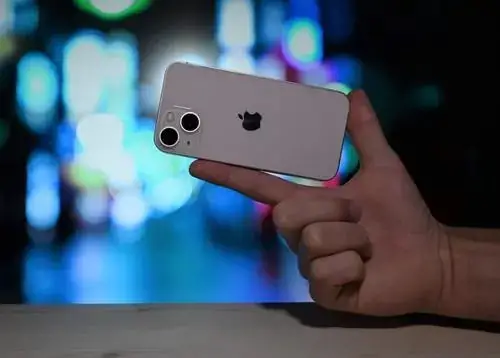 | 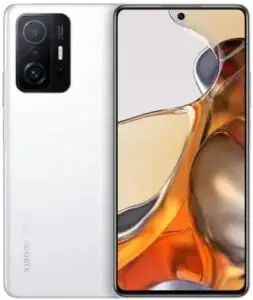 | 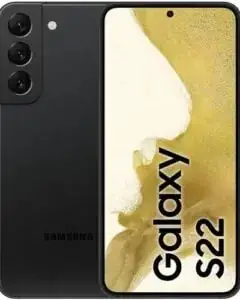 | 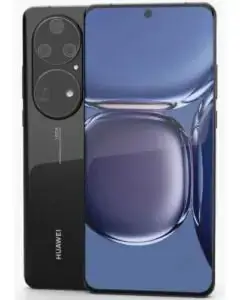 | ||
| Perfect For | Next level experience | Flagship performance at half the price | Overall use | Photography and all-round performance | Photo capabilities and graphics performance |
| Display | 5.4 ” super retina XDR OLED | AMOLED 120 Hz | Dynamic AMOLED 120 Hz | OLED 120 Hz | LTPO AMOLED 120 Hz |
| Operating System | iOS 15 | Android 11, MIUI 12.5 | Android 12 | EMUI 12 | Android 12 |
| Memory | Up to 512GB (4GB RAM) | Up to 256GB (12GB RAM) | Up to 256GB (8GB RAM) | Up to 512GB (12GB RAM) | Up to 512GB (12GB RAM) |
| Camera | 12 MP | 108MP wide, 8MP ultrawide, 5MP telephoto macro | 50 MP Main, 10 MP Telephoto, 12 MP ultrawide | 50MP wide, 64MP telephoto, 13MP ultrawide, 40MP B/W | 50MP wide, 48MP telephoto, 12MP ultrawide |
| Battery | Li-Ion 2438 mAh | Li-Po 5000 mAh | Li-Ion 3700 mAh | Li-Po 4360 mAh | Li-Ion 5003 mAh |
| Sound | stereo speakers | Stereo speakers | Stereo speakers | Stereo speakers | Stereo speakers |
| Sensor | Face ID | Fingerprint side-mounted | Fingerprint ultrasonic | Fingerprint optical | Fingerprint optical |
| 595 Reviews | 187 Reviews | 150 Reviews | 14 Reviews | 316 Reviews | |
| $547.99 | $449.50 | $726.00 | Price not available | $679.50 | |
| Buy on Amazon | Buy on Amazon | Buy on Amazon | Buy on Amazon | Buy on Amazon |
What are the best phones for astrophotography?
iPhone 13 Mini
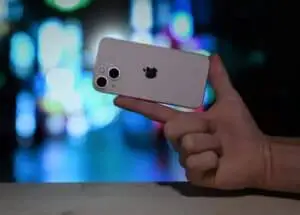
| HARDWARE | 9/10 | |||
| BATTERY LIFE | 10/10 | |||
| DISPLAY | 8/10 | |||
| MEMORY | 9/10 | |||
| VALUE/PRICE | 9/10 |
| CUSTOMER REVIEWS |
Key Features
|
|
|
The iPhone 13 mini is practically identical to the iPhone 12 mini as most of the design is the same. But there are some important changes we need to mention. The iPhone 13 mini is heavier and thicker compared to iPhone 12 mini, and that is because of the larger battery. This means that the cases for iPhone 12 mini might not fit well for the new phone. Because the phone is so small, holding it feels natural and easy. To our surprise, the iPhone 13 mini is one of the most durable iPhones there are, and that is mainly due to its compact build. The phone has a ceramic shield on the front, an aluminum frame in the middle and it has a corning-made rear panel. iPhone 13 mini will have no issues at the beach or by the pool, as it has great dust and water resistance ratings. Apple went above and beyond for this product, and tests have proven that it can handle at least 30 minutes under 60 meters of water.
DISPLAY:
iPhone 13 mini has a 5.4 ” super retina XDR OLED display with a 60hz refresh rate. The screen itself is great with an excellent 831 NITs of max brightness and with a pixel density of 476 PPI it has the sharpest screen on this year’s iPhone lineup.
BATTERY:
The 2438 milliamp-hour battery seems tiny by today’s standards but it’s a 10% increase over last year. Apple’s 20-watt charger gets the phone from zero to 61 percent in half an hour and a full charge took an hour and 24 minutes.
CHIPSET:
Like the rest of apple’s iPhone 13 lineup the mini has the A15 Bionic chip, but where it differs is that it has 4GB of RAM instead of the 6 GB on the pro models. This is the fastest mobile chipset to date and it is way ahead of the Android competition. You’ll definitely have plenty of power for years to come.
CAMERA:
The iPhone 13 mini supports a 12MP (f/1.6, PDAF, sensor-shift OIS) main camera with a bigger sensor than last year and sensor-shift stabilization along with a 12-megapixel ultrawide camera with fixed focus. These are the same ones you’ll find on the iPhone 13. The iPhone can record up to 4k video at 60 frames per second with both cameras. All videos are digitally stabilized and they all feature expanded dynamic range thanks to smart HDR. iPhones usually have excellent video quality and naturally, the iPhone 13 mini can capture some of the best videos in the mobile business.
CONCLUSION:
The iPhone 13 mini isn’t a huge jump from the 12 and the annoying notch, while smaller, is still around. The screen still doesn’t have a high refresh rate and the ultra-wide is only fixed focus. Other than that, it has a beautiful durable, and lightweight design and it has the same excellent speakers, top-notch camera quality, and a powerful chipset as its siblings. Simply put, if you’re looking for a compact flagship this is the best one on the market and we highly recommend it.
- Very good chipset.
- Great battery life.
- Practical
- Small display.
| LEARN MORE | OR | CHECK PRICE |
Xiaomi 11T Pro – Best budget phone for astrophotography

| HARDWARE | 9/10 | |||
| BATTERY LIFE | 10/10 | |||
| DISPLAY | 9/10 | |||
| MEMORY | 9/10 | |||
| VALUE/PRICE | 10/10 |
| CUSTOMER REVIEWS |
Key Features
|
|
|
Detailed Review
The Xiaomi 11T Pro is an excellent device in almost every aspect and is rightfully considered as the for astrophotography.
Probably one of the most shocking features is the ridiculously fast 120W charging. According to Xiaomi the phone can be charged from 0 to 100 in just 17 min. Of course in reality it takes a couple of minutes longer but nevertheless, it is at the moment the fastest charging phone on the planet.
The design of Xiaomi 11T Pro looks very sleek. The performance is also impressive. After all, the smartphone is equipped with a Snapdragon 888 that will handle everyday tasks with ease. Gamers should also be satisfied with the performance of the 11T Pro. Complex 3D games are not a challenge for this smartphone.
The OLED panel has a resolution of 2,400 x 1,080 pixels – with a size of 6.7 inches, the 11T Pro has a high pixel density of 393 ppi. This means that the display shows the content beautifully sharp. We also really like the high screen refresh rate of 120 Hz, because everything scrolls smoothly across the screen.
The phone also comes with a triple camera. As with the predecessor, Xiaomi relies on a 108-megapixel sensor in the main camera. An ultra-wide-angle lens (8 megapixels) and a tele-macro lens (5 megapixels) complement the camera setup on the back. The main camera is optically stabilized and shoots videos in either 4K at 60 frames per second or in 8K resolution at 30 frames per second. The camera is top-notch. The photos look good in both daylight and low light.
- Extremely short charging time
- Outstanding performance
- High-contrast and colorful display
- IP protection and wireless charging are missing
| LEARN MORE | OR | CHECK PRICE |
Samsung Galaxy S22

| HARDWARE | 9/10 | |||
| BATTERY LIFE | 7/10 | |||
| DISPLAY | 9/10 | |||
| MEMORY | 10/10 | |||
| VALUE/PRICE | 9/10 |
| CUSTOMER REVIEWS |
Key Features
|
|
|
Detailed Review
When talking about the best phone for astrophotography we cannot go past the Samsung Galaxy series. The Galaxy S22 is the smallest of the new line with its 6.1-inch display.
You are getting a very similar design to last year’s Galaxy S21, just a little bit smaller, a little more squared off and with a glass back instead of plastic.
The phone offers IP68 protection and the best ultrasonic fingerprint sensor in the game.
The S22 has a 1080p 120 Hz refresh rate display with an adaptive AMOLED panel and 1300 nits of brightness. You will have no problem viewing the content on the screen even under daylight. One cool feature to mention is definitely the ability to modulate the display refresh rate all the way down to 10 Hz to save battery.
The cameras on S22 got a major upgrade. You have a 50 MP main shooter with optical image stabilization, 10 MP telephoto with 3X optical zoom, and a 12 MP ultrawide. Ultrawide camera is also used to capture macro shots and is triggered automatically when you focus close to an object. In macro mode, the camera provides excellent results, better than any dedicated macro camera.
Regarding performance there is no question, this phone delivers. It features the latest Snapdragon 8 Gen Chipset and 8 GB of RAM. Even the most demanding games are running smoothly at ultra settings.
- Strong performance
- Fast fingerprint reader
- Overall great camera quality
- Very good display quality, especially brightness and contrast
- No charger included
- Sometimes sluggish loading times
| LEARN MORE | OR | CHECK PRICE |
Huawei P50 Pro – Best overall for astrophotography

| HARDWARE | 9/10 | |||
| BATTERY LIFE | 8/10 | |||
| DISPLAY | 10/10 | |||
| MEMORY | 9/10 | |||
| VALUE/PRICE | 9/10 |
| CUSTOMER REVIEWS |
Key Features
|
|
|
Detailed Review
The OLED screen has a diagonal of 6.6 inches and has a resolution of 2700×1228 pixels, which results in a good sharpness of 450 ppi. The refresh rate is a maximum of 120 Hertz (Hz). The touch sampling rate is at 300 Hz. In the standard “Dynamic” mode, the frequency adapts automatically. The display also convinces with very good brightness.
The so-called “True Chroma” main camera (f/1.8) takes high-resolution photos with 6144×8192 pixels, i.e. 50.3 MP. There are neither effects nor zoom options. It is 3072×4096 pixels (12.6 MP) in the standard-setting. The camera delivers amazing results in any lighting conditions. The telephoto lens (f/3.5) with optical image stabilization has a resolution of 64 MP and enables a maximum magnification of 100x. You may have seen some comparisons of the zoom against iPhone 13. Huawei P50 Pro is truly impressive. The ultra-wide-angle lens (f/2.2) takes pictures with 13 MP. There is also a black and white “True Chroma Camera” with a resolution of 40 MP as further support for image processing. It is worth mentioning that at the time of writing Huawei P50 Pro has the best camera according to DXOMARK.
The phone offers strong performance thanks to Snapdragon 888 and up to 12GB of RAM. In terms of benchmarks, the P50 Pro competes with the fastest mobile phones and also runs performance-hungry games smoothly.
The P50 Pro offers a great display, chic design, top photo quality and lots of speed and is definitely one of the for astrophotography.
- Excellent primary camera
- The device feels premium in the hand
- Fast wired and wireless charging
- Still no Google services
- No 5G capability
| LEARN MORE | OR | CHECK PRICE |
Google Pixel 6 Pro
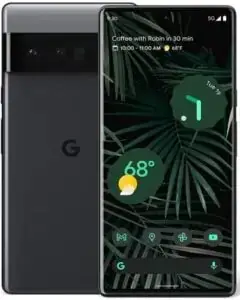
| HARDWARE | 9/10 | |||
| BATTERY LIFE | 8/10 | |||
| DISPLAY | 10/10 | |||
| MEMORY | 10/10 | |||
| VALUE/PRICE | 9/10 |
| CUSTOMER REVIEWS |
Key Features
|
|
|
Detailed Review
Google Pixel 6 Pro is a genuine Android flagship that for sure needs to be on the list of best phone for astrophotography. You immediately notice the high-quality workmanship and the new interesting design.
The 6.7-inch display of the Pixel 6 Pro is covered by Gorilla Glass Victus, which merges flat into a matt aluminum frame at the edges. The QHD-Plus resolution of 3,120 x 1,440 pixels results in a pixel density of a razor-sharp 512 ppi. The AMOLED display also impresses with a maximum brightness of 932 candelas per square meter and strong contrast values.
With a refresh rate of up to 120 Hertz, Google confidently rounds off the overall impression of the display. The Pixel 6 Pro is very smooth to browse and play when you need it.
Like the Pixel 6, the Pixel 6 Pro is said to capture up to 150 percent more light thanks to the significantly larger image sensor compared to the Pixel 5, which should be particularly noticeable when taking photos in low-light conditions. The wide-angle camera is optically stabilized.
The software optimization is very sophisticated also thanks to the Tensor chipset. The Pixel 6 Pro takes photos under almost all conditions – and is better than with most top smartphones.
Regarding performance the phone also delivers. Despite Tensor being less powerful than the latest Snapdragon or A15 Bionic it still handles everyday tasks and even demanding games with ease.
- Incredible cameras
- Tensor chipset performs well
- We find the new design appealing
- It takes a bit long to full charge
| LEARN MORE | OR | CHECK PRICE |
Additional hardware information
Cameras
The phones these days feature multiple-camera setups. In fact, it is very difficult to find a phone with just one camera. Usually, they have at least two in the back and some even feature four. Now there is a logical explanation behind all this. The companies aren’t just stacking cameras left and right. Each camera is different and serves its own purpose. This is how we get the best results and enhance our photography experience. The most common camera types you will find are wide camera, ultrawide camera, telephoto camera, macro camera and ToF sensor.
Wide camera – It is also known as the main camera that we find on the rear side of the phone. You will notice differences in Megapixels that a certain camera has. A good main camera should have at least 12MP. Furthermore, it is also good if it has good autofocus and an optical image stabilizer, also known as OIS.
Ultrawide camera – It offers a wider field of view than the main camera. This way you can capture more into the image and it is more similar to what our eyes see. It can offer a great advantage when taking wider images such as family reunion photos for example. However, sometimes a photo can appear curved due to a wider angle and some objects might appear abnormally shaped.
Telephoto camera – It is normally used for zoomed-in shots that are taken from a distance. You can zoom in on a scene or subject and get closer without actually having to move. This can serve us well when we don’t want to approach the subject. A telephoto lens increases focal length. It brings objects closer to you.
Macro camera – It is used for close-up shots. We can capture images of small objects, such as insects or plants. These objects can appear big in a photo and we can capture a lot of detail. In fact, we can capture things that are too small to be visible to the naked eye.
ToF sensor – It is a piece of equipment that most flagship phones these days have. A ToF sensor can help you determine the distance between the camera and the object. It is actually a depth sensor that helps the phone create a three-dimensional map of the world. It uses infrared light to determine the distance between the objects and maps 3D space.
Dynamic range
The understanding of dynamic range can really help us improve our photos. Dynamic range describes the ratio between the maximum and minimum light intensities. In simple words, it tells us the difference between the lightest and darkest tones in an image. Each device has its own dynamic range, which affects the output – that is our image. The wide the dynamic range, the better. You will stumble across this topic a lot in photography. So just remember that a wider dynamic range gives you better results. A wide dynamic range will allow you to capture more detail in brighter or darker areas. Otherwise, those areas will just appear very bright, nearly white or very dark, nearly black. So to create a good exposure, there must not be too bright or too dim parts.
An interesting fact is that human sight has a relatively high dynamic range. No camera can match it. Therefore some pictures of sunsets for example appear different than they are in real life.
Sharpness
Sharpness in photography stands for the overall clarity of the image. This combines focus and contrast. The subject must be clear, lifelike, and have a lot of details. This is when we can speak of sharpness.
Sharpness is very important in photography. Better sharpness means more detail. Furthermore, it also emphasizes the textures of the subject. You should always try and make your photos as sharp as you can. This way the images will appear more professional and interesting for the viewers.
For the best results, you will have to have good equipment as well as the right technique and well-developed skills. However, with the right gear, it can be much simpler. It is also important to know that sharpness is related to the resolution, as the number of pixels and their size affect overall sharpness.
Resolution
The image resolution relates to the number of pixels that are featured in an image. Higher resolutions simply mean that there are more pixels in the photo, whether lower resolutions mean that there are fewer pixels in a photo. The number of pixels also determines how much information is captured in an image. Or in other words, how much detail it can hold. So, the more the better, as it usually results in higher quality photos.
Changing the resolution, you are basically saying how many pixels you want to have per square inch. So it is always good to have a little more than less. After all, it affects the sharpness of the image as well, and you don’t want blurry photos. You want to capture as much information as you can. Cropping the photo, while keeping the same resolution will significantly drop the quality of the photo. That happens because you remove a certain amount of pixels, which basically means you lose a certain amount of information that should occupy that space. So avoid doing that.
There is a lot of talk about Full HD resolution these days. Here we have 1920 pixels wide and 1080 pixels high image. Such resolution is very common among televisions these days. However, there is also Ultra HD, which is also known as 4K. This means that the resolution here is about 4000 pixels, although is usually a bit less – 3840 pixels.
Contrast
Contrast represents a visual ratio between different tones in an image. It defines color characteristics and affects areas such as highlights, shadows, colors, clarity, and textures. A simple way of putting it is to say that contrast is the scale of difference between black and white in the photo. High contrast means that there will be bright highlights and dark shadows, whether low contrast images have little difference between light and dark tones.
We also know different types of contrasts. There is Tonal contrast, which refers to dark and bright areas in the photo. Then we have Color contrast which means pairing warm and cold colors to make them stand out more. We also know Conceptual contrast, which helps us add depth and encourages viewers to engage with the photo. Then there’s also Texture contrast, where we combine rough and soft elements for an extra punch. All of the contrasts are very important if we want the image to look professional and appealing. So we must know how to use them if we want to achieve that magical result. They can help us tell a story and make certain things stand out more. So we can really be artistic with the contrast.
Best Phone for Astrophotography – CONCLUSION
As you have learned choosing a phone for astrophotography is not a trivial task. The phone cannot compare to a professional DSLR camera with its small sensor size. Therefore, it is important that the sensor quality is at the top level and you will also need to play with some manual camera settings, as standard auto mode usually won’t cut it.
Any phone from our list will give you the best camera experience. So if you stay within our selection of best phones for astrophotography you are good and ready to go.